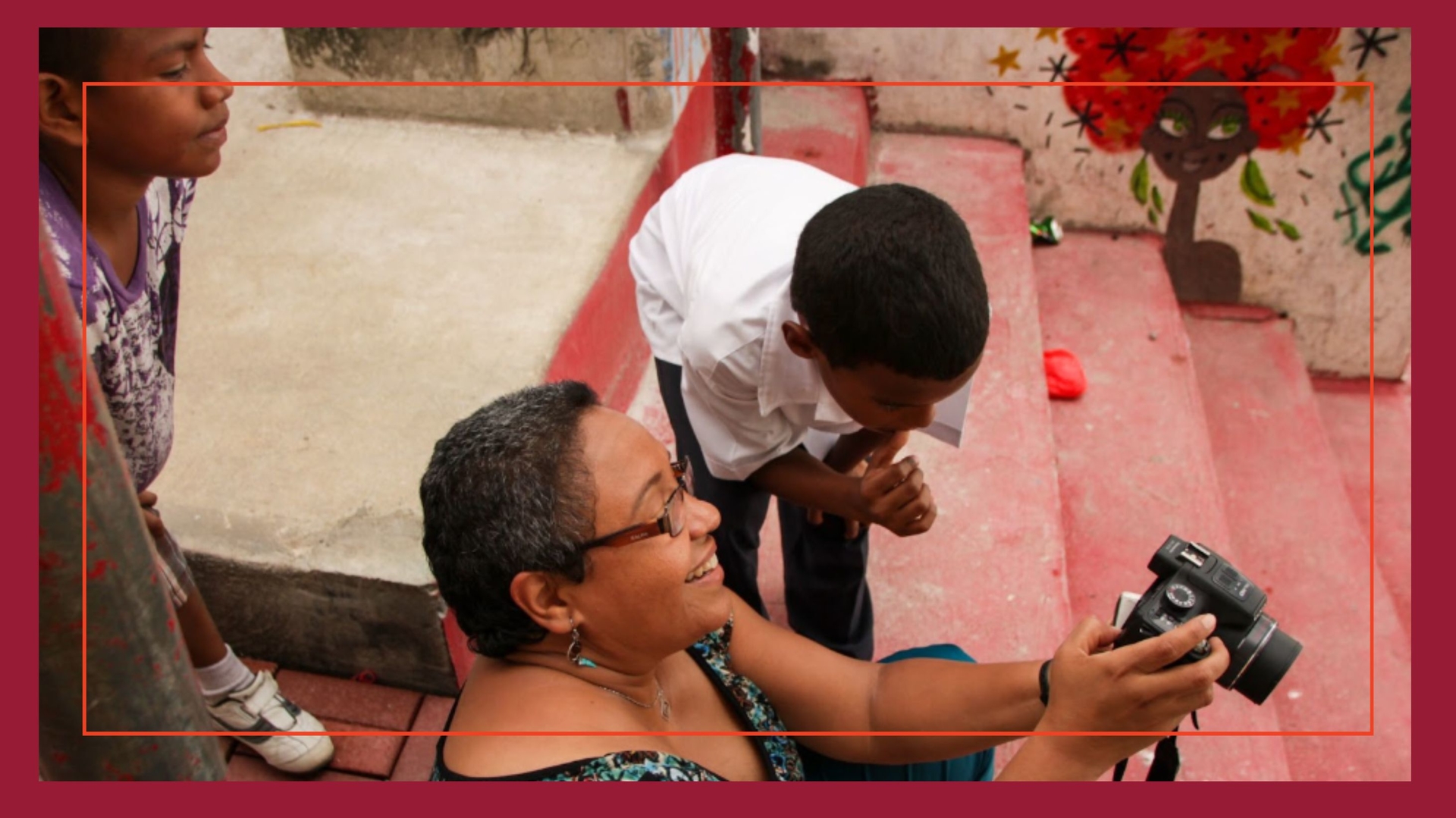
María Amado has always relied on street vendors when she visits family in her native Panama. Now the Guilford professor is writing a book about them.
Caption: Guilford Professor Maria Amado shows off her photography skills to Panamanian children.
Street vendors have always played an integral role in the lives of Panama’s citizens, which means they’ve always played a vital role in Guilford Professor María Luisa Amado’s life, too. Now she’s writing a book about the country’s buhoneros, as they are called, and the foundation they offer to the country’s economy.
María, Lincoln Financial Professor of Sociology and Anthropology, was born and raised in the isthmus of Panama, which connects North and South America, before coming to the United States as a graduate student in 1995.
Her family — her father, five siblings and countless cousins, aunts and uncles, nieces, and nephews — still relies on vendors, as part of an informal economy on the cramped streets of Panama’s big cities much like New York City’s vendors do in Times Square.
On any given morning, the vendors set up shop on street corners offering vegetables, mangoes, plantains, and fish. Others regularly ride through the streets with bullhorns announcing their presence.
"Informal market workers are not unique to Panama,” says María. “There are countries in which over 50 percent of the workforce is found in the informal economy. In Panama, almost half of the workforce is made up of people in informal employment, among them, street vendors,” and it shows.
Maria has been a regular customer of the peddlers for years whenever she visits her family. When she went back in 2002 after a two-year absence, she was amazed at just how many more displaced workers from Panama's formal economy were now relying on informal employment, which peddlers fall under.
While she has sustained an interest in peddlers' livelihoods and trials since her student years, she began to formally investigate this topic more recently as a faculty member at Guilford College, given the prominence of this phenomenon in her classes about Latin American societies.
María likes to incorporate her travels into her Guilford classes. When she found little information — especially photos and video — on peddlers, she decided to document their lives and stories with the help of her partner, Joe Jowers, a filmmaker by training. The documentary, Bien Cuidao: The Informal Economics of Survival in Panama, contains a trove of interviews with peddlers themselves, and has been shown in many of María’s classes at Guilford as well as N.C. State University.
Making the documentary required so many interviews of peddlers — many of whose stories were left on the cutting room floor — that María decided a book might be in order. Her book, titled Neoliberalism and Labor Displacement in Panama: Contested Public Space and the Disenfranchisement of Street Vendors, is scheduled to be released next year.
Panama’s informal market workers have a significant, albeit unmeasured, impact on the country’s economy. So significant that the state does not press vendors for permits or attempt to formalize them because Panama and neighboring countries are not equipped to provide employment to everyone.
María says thousands in the workforce depend on these informal markets but increasingly those livelihoods are in peril as the number of people in informal employment grows and competition for customers continues.
This is heightened by the shrinkage of the space that street vendors occupy. María’s book focuses on the displacement of street vendors from four commercially strategic areas of Panama City. These areas have been vital venues for peddlers’ activities but have recently become the target of gentrifying processes that cater to a higher-status clientele.
“My main argument in the book is that the Panamanian working class is subject to a double squeeze under current free-market economics,” says Maria. “On one hand, deregulation of labor relations reduces access to stable jobs in the formal sector; on the other, the implementation of exclusionary development projects confines informal employment workers to marginal city spaces."
These days María is telling the peddlers’ stories through words and images. Her camera is more than a tool for storytelling. “It’s very therapeutic for me,” she says. She posts photos of street vendors and other subjects on her blog along with the stories behind them.
Stories she shares with Guilford students.“It’s a world I’m sure many of our students are unaware exists and I think that’s one of Guilford’s missions,” María says, “to share the stories and learn from them.”

